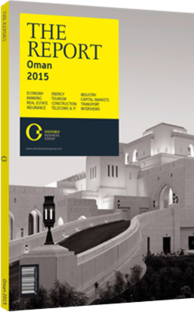Conserving natural landscapes and habitats as visitor numbers grow
Perched on a rocky headland just minutes drive from Khasab, in Oman’s Musandam exclave, the Atana Musandam hotel represents not only a major advance for the sultanate’s own new hospitality chain, but also a striking attempt to balance tourism development with environmental and social sustainability.
The Atana Musandam won the Best Sustainable Project award at the 2014 Dossier Construction and Awards summit, not long after it had launched. The hotel sources much of its food and produce locally, pays back into the community via the use of local arts and crafts in its facilities, and conducts training programmes for local hospitality sector employees.
Going Green
The hotel was designed in line with Leadership in Energy and Environmental Design (LEED) Green Building standards, with a focus on sustainability in the facility’s day-to-day operations in energy and water conservation. The hotel also conducts regular beach cleaning, addressing a growing concern that the rush to develop hotels, Integrated Tourism Complexes (ITC) and other tourism facilities on Oman’s coasts may damage what is a delicate ecosystem.
Indeed, no where is this more of a concern than with Oman’s turtle beaches. These dot the sultanate’s 2092-km coastline, with Leatherbacks, Green Turtles, Olive Ridleys, Loggerheads and Hawksbills all congregating to lay their eggs. Ras Al Hadd, Masirah Island, Al Daymaniyat Islands, Ras Al Junayz and the shores of Dhofar are popular places for these turtles to lay their eggs, and also popular tourists destinations.
Thus, tourism development in these areas must be highly sensitive to the turtles’ needs. Legislation was passed to this effect. Nesting sites are protected by law and only licensed operators are allowed to take parties to visit the creatures. At the same time, the density of tourism development on the coast is relatively low. According to recent statements in the Times of Oman, Omran, the state-owned tourism development company and owner of the Atana chain, calculates that in Muscat governorate – the most densely inhabited part of the country – from Seeb in the north to Fins beach in the south, only 2% of the 350 km of coastline has been developed for hotels or ITCs.
Heading Inland
In recent times, mountain and wadi, or river valley, environments have also seen rapid hotel construction. Jebel Akhdar, inland from Muscat, saw the 86-room luxury Alila Jabal Akhdar open in May 2014, with an Anantara Hotel and Spa also now under construction next door. Such inland sites have long been popular with day visitors from Muscat, who will now have a chance to stay in luxury. This is an advantage for the local economy, but also a concern for the environment in a region where water management has been a careful art since ancient times.
The new hotels also meet LEED standards, with Omran anxious to ensure that all new developments meet these sustainability requirements, and that older developments are retrofitted to meet the LEED standards. Concerns, however, are still voiced given that the impact of new hotels in delicate environments is not limited to the buildings themselves, but also to the associated community. More jobs increase demand for accommodation for staff, while the presence of more tourists creates spin-off local industries looking to serve them. Indeed, this multiplier effect is precisely what the sultanate’s tourism strategy is designed to create. Managing this associated development is thus a key part of sustainable tourism.
Sustainable Focus
The signs are that in Omran and the sultanate’s tourism strategy, sustainability and environmental protection are key. The Oman Conference and Exhibition Centre, which includes a 300-room Crowne Plaza, was designed and constructed to LEED standards, for example. The fact that Oman aims to make developments conform to traditional Omani style is also a plus in this vein; after all, conservation of precious resources in a harsh environment is what has traditionally allowed Oman to thrive, as seen by the remarkable Al Falaj irrigation system, still visible in mountains and valleys around Muscat.
You have reached the limit of premium articles you can view for free.
Choose from the options below to purchase print or digital editions of our Reports. You can also purchase a website subscription giving you unlimited access to all of our Reports online for 12 months.
If you have already purchased this Report or have a website subscription, please login to continue.

